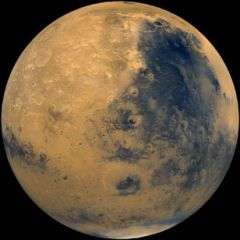The search for unusual alien life on Earth and life that can survive on Mars

Questions such as "How to search for weird alien life?" and "Would Earth microbes survive if delivered to the surface of Mars?" are addressed in articles that are part of the collection of reports presented in the current issue of Astrobiology, a peer-reviewed journal published by Mary Ann Liebert.
David Smith, Andrew Schuerger, Mark Davidson, Stephen Pacala, Corien Bakermans, and Tullis Onstott, from Princeton University, the Kennedy Space Center, and Michigan State University, exposed a bacterium that lives in the Siberian permafrost on Earth to the harsh conditions on Mars using a Mars Simulation Chamber. Low temperature and atmospheric pressure, and high dryness and ultraviolet (UV) irradiation flux characterize the surface conditions of present day Mars. Though certain terrestrial bacteria pose a serious contamination threat to Mars, the researchers found that the bacterium tested could not survive the UV levels typically found on the martian surface. They describe their findings in the article, "Survivability of Psychrobacter cryohalolentis K5 Under Simulated Martian Surface Conditions."
Another article describes exposure of an Arctic bacterial permafrost community to simulated martian conditions, including UV irradiation equivalent to about 80 days on the surface of Mars, freeze-thaw cycles, low pressure, and comparable atmospheric gas composition. Aviaja Hansen, Lars Jensen, Tommy Kristoffersen, Karina Mikkelsen, Jonathan Merrison, Kai Finster, and Bente Lomstein, from the University of Aarhus (Denmark), show that the bacteria were better able to survive the deeper under the surface they were found, with a 2-centimeter layer of dust offering substantial protection. Biomolecules, such as bacterial DNA and proteins, were more resistant to destruction than the bacteria themselves, as documented in the article, "Effects of Long-Term Simulated Martian Conditions on a Freeze-Dried and Homogenized Bacterial Permafrost Community." One of the broader conclusions that can be drawn from this study is that persistent long-term forward contamination is unlikely as long as bacterial cells are deposited in the upper 2 cm of the martian surface dust.
"Investigators focusing on the survival potential of Earth's extremophiles on Mars provide important baseline studies relevant to planetary exploration," says Sherry L. Cady, PhD, Editor of Astrobiology and Associate Professor in the Department of Geology at Portland State University. "The potential for forward contamination during the exploration of another planetary body is a global concern of all space-faring nations."
Astrobiologists recognize that potential life forms may be very different from the types of living organisms they are used to seeing on Earth. In an article titled, "Signatures of a Shadow Biosphere," Paul Davies, Steven Benner, Carol Cleland, Charles Lineweaver, Christopher McKay, and Felisa Wolfe-Simon provide strategies for addressing this challenge based on the identification of unusual life forms that may be present today or in the past in "shadow biospheres" on Earth. The authors present a case for how the search for weird life (life as we do not know it) can begin right here on Earth. "Alternative biochemistries may escape our current efforts tailored to characterize and identify known life," says co-author Felisa Wolfe-Simon, Postdoctoral Research Fellow at the Department of Earth and Planetary Sciences, Harvard University. "If identified here on Earth, a different life form may suggest either a deep root to known biology or perhaps even a 'second genesis' of life."
More information: www.liebertpub.com/ast
Source: Mary Ann Liebert
















